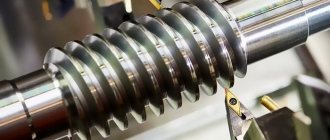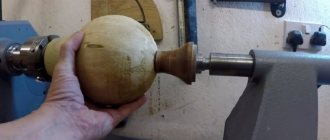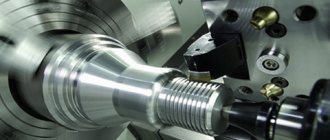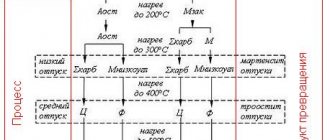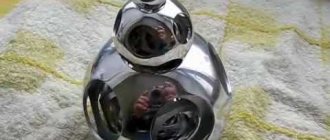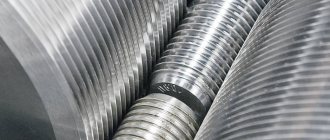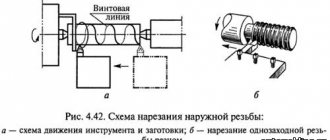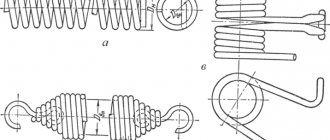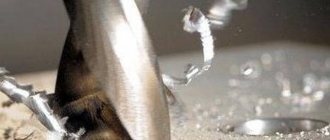Every professional who deals with cutting tools, be it a butcher, carpenter, turner or jeweler, always follows the law when sharpening: the sharpening angle depends on the material that will be cut. The material from which the cutter is made has nothing to do with this angle; it’s just that two cutters made of different metals will differ in wear resistance at the same sharpening angle and the same material being processed.
All sharpening angles were determined back in the 19th century. We will shave the hair with a sharpening angle of 8º-12º, regardless of the brand of the razor: “Sollingen” or “Tryd Bacha”. Cutting leather – angle 15º-18º, it doesn’t matter whether our jamb is made from a P9 saw or forged from a spring. A jeweler, for processing steel, will sharpen his gravel to an angle of 85º-90º, be it “Fish” made in Swiss, or homemade from the Dmitrovsky market. I started with this truism, because amateurs who see a knife for the second time in their lives have a completely opposite opinion: everything depends only on the material from which this knife is made. Well, since ignorance of the laws does not relieve responsibility, the result is disappointment and resentment for the rest of your life. I deal with this every day, so I will describe two typical cases of complete ignorance.
Case one. A short introduction: wood carving chisels have a hardness of 52 units - 59 units. HRC, sharpening angle 23º-30º. The sharpening angle again depends on the type of wood: small for soft species (linden, poplar, aspen), large for hard ones (oak, boxwood, and countless others). Ideally hardened steel with a sharpening angle of less than 18º begins to curl (bend); if the steel crumbles, this is a defect. The chisel must have a “shoulder”, i.e. a chamfer, which determines a certain radius of the thread: entry into and exit from solid wood. If you need to increase this radius, then change the thickness of the chisel, but not the sharpening angle.
This was the preface. And now a typical case. They buy a set of chisels and return them with a complaint: the chisels do not cut and are bent. I look: all the cutters are sharpened, there is no shoulder, the sharpening angle is 5º-8º, i.e. the chisel looks like this:
Fundamentally, it cannot cut, because... has no shoulder, and hence no turning radius - it goes in a straight line. No explanations are accepted because ignorance is aggressive and always believes itself to be right.
Case two. Complaints about a damask knife: it doesn’t cut glass and it doesn’t cut nails. The reason is the same: the knife has been sharpened - the edge is 0.1 mm, the sharpening angle is 20º. Such a knife, no matter what it is made of, can only cut leather. I’ll explain using a chisel as an example. It is made from U7-U8 steel, sharpening angle 45º-60º, shoulder width 10-12 mm, hardness 52-58 HRC units. With these parameters, the chisel cuts iron without becoming dull (until it collides with hardened steel). The main thing here is shoulder width.
It is not necessary to study the strength of materials to understand that the pressure is redistributed evenly over the entire area, the metal experiences a small load per 1 m² and does not deform. Take the same chisel, sharpen it to a thickness of 0.1 mm and try to chop nails - the nail will be dented to its entire diameter, which means that if you want the knife to cut a nail, then sharpen it 45º -60º, and create an edge thickness of 1-2 mm. Then he will chop nails, regardless of what this knife is made of: steel U8, Kh12FM, or damask steel, here I refute the persistent opinion: “and since it is damask steel, then it should...”
Bulat does not owe anyone anything, it is a steel that obeys all the laws of metal science, so how will it cut nails with a small sharpening angle and narrow shoulders?! The advantage of damask steel over steel is that at a sharpening angle of 60º, it shaves. In my practice, I almost cut off the first phalanx on my index finger by running it along the spine at an angle of 90º. They cut carbides sticking out in all directions. Their dimensions are quite noticeable: it is a spindle, 3-5 µ thick and 10-15 µ long. Hence the conclusion: if desired, a damask blade can be easily ruined by sharpening: you need to create narrow shoulders, a small angle, treat it with soft water stones, then stretch the edge along a copper rod or a block of hard wood and tear out all the carbides. A strip of shiny, polished matrix with a hardness of 45 units is formed on the edge. After this, you can safely compete with a knife made from an aluminum spoon - damask steel will lose. Complying with certain laws of sharpening steel and damask steel is no more difficult than pouring gasoline into a gasoline engine, and diesel fuel into a diesel engine. Although you can strike a pose like a stern Siberian man who pushed a rail into a sawmill, and then shook his head reproachfully and said: “Well, what a let down you are - a foreign little thing!”
Properties of hardened metals
Hardening of metals is a procedure for processing a material at high temperatures to a certain limit and further cooling. During the hardening process, a phase transformation occurs from austenite to martensite. After hardening, the mechanical properties of steels change: strength and hardness increase, while brittleness also increases and ductility decreases. To reduce brittleness and improve ductility, I subject the steel to temper annealing.
Hardened steel can be processed using different methods:
- turning;
- milling;
- drilling;
- grinding.
But, for any type of processing, cutting modes should be chosen correctly, since due to thermal effects, the fragility of the metal increases. In addition, it quickly accumulates heat at the cutting site, which leads to material sticking to the turning tool and its rapid wear.
Steel turning
Homemade drill
It is not necessary to buy an expensive drill for the job; in some cases it can be made at home. A cobalt-tungsten alloy rod is best suited for this - it wins. Such a rod is easy to recognize among other pieces of iron: it will not be cut with a metal blade. Then do the following:
- Place a diamond wheel on the emery.
- They trim one side of the rod and grind off slots on this side, like on a flat-head screwdriver.
- Next, grind down the sides to create a sharp cone.
Dear site visitors, please share in the comments your suggestions on how else you can drill a hole in steel that has been hardened.
Cutting conditions when turning hardened steel
To obtain a high-quality part, roughing and finishing of hardened steel on lathes must be carried out taking into account the following recommendations:
- Start work at low speed and with the smallest depth of cut. This will allow you to obtain a small angle and achieve correct edge processing, which will have a positive effect on the service life of the tool.
- To achieve high quality surface finish of the part and reliability of the insert, increase the feed gradually. This approach will also improve chip removal and crushing.
- When finishing machining, select a cutting depth greater than the insert nose radius. This will eliminate the risk of deviation and allow you to achieve high precision when working with the internal surfaces of workpieces.
- Do not operate at very low cutting speeds as this will distort the tooling and workpiece.
A significant role when turning hardened steel is played by the use of coolant, which not only increases the reliability of the metal processing process, but also increases the productivity of the equipment and the quality of the finished product. It is important to use coolant correctly:
- for rough and semi-finish turning, it is recommended to opt for the lower coolant supply; in the case of finishing machining, preference should be given to equipment with a high-precision lower coolant supply;
- The level of coolant supply pressure must be adjusted in each specific case, depending on the cutting depth, material supply, nozzle diameter, and grade of steel being processed.
Methods for drilling hardened steel
Drilling hardened steel is characterized by high heating of the surface of the workpiece and tool, which leads to rapid wear of the latter. Therefore, during processing, they try to remove excess heat or make the area where the channel will be softer.
The first method, which allows you to make hot metal more pliable, is based on the use of acids. Suitable substances may include nitric, perchloric or sulfuric acid. These liquids are used pointwise, that is, they are used to treat specifically the place where there will be a hole in the future (the area is etched). To prevent the acid from leaving the working area from materials not exposed to acid (polymers, paints, paraffin), something like a side is organized around the future hole. The hole is filled with active liquid and left for a certain time. Next, drill with a regular drill.
Another method of weakening the hardness of hot metal in the channel receiving zone is based on heating this zone to high temperatures. A welding machine copes best with this. In this case, you need to choose the right arc strength so that the metal does not melt or deform. When the workpiece in the drilling area is hot, you can make a hole with a regular high-speed steel drill.
The easiest way, but not the cheapest, is to purchase a special drill designed for making holes in hardened metal. The cutting edges of such a tool are reinforced with pobedit tips or made of pobedit plates. In this case, it is also desirable to use additional cooling of the work area.
When working with acids, you need to be extremely careful and perform the operation in a well-ventilated area. This will help prevent burns or poisoning from harmful fumes.
Selecting a cutting tool for turning hardened steel
Turning hardened steel is one of the most difficult tasks in metalworking, which is best solved using the following types of cutting equipment:
- Carbide inserts are a versatile and economical option that is resistant to abrasive wear. This tool is best suited for working with steel with a hardness of no more than 55 HRC. At higher specifications, the tool life will be significantly reduced.
- Ceramic plates – equipment made of mixed ceramics or reinforced with special crystals. It can last a long time even when working with very hard steel, but the surface processed by such a plate will not be of very high quality. Therefore, they are recommended for rough and semi-finish turning.
- Cubic Boron Nitride (CBN) inserts are a high-strength cutter that can handle hardened steel up to 65 HRC and allows for perfect metal finishing results with up to 70% time savings in the production process.
Victor Kuznetsov
Every professional who deals with cutting tools, be it a butcher, carpenter, turner or jeweler, always follows the law when sharpening: the sharpening angle depends on the material that will be cut. The material from which the cutter is made has nothing to do with this angle; it’s just that two cutters made of different metals will differ in wear resistance at the same sharpening angle and the same material being processed.
All sharpening angles were determined back in the 19th century. We will shave the hair with a sharpening angle of 8º-12º, regardless of the brand of the razor: “Sollingen” or “Tryd Bacha”. Cutting leather – angle 15º-18º, it doesn’t matter whether our jamb is made from a P9 saw or forged from a spring. A jeweler, for processing steel, will sharpen his gravel to an angle of 85º-90º, be it “Fish” made in Swiss, or homemade from the Dmitrovsky market. I started with this truism, because amateurs who see a knife for the second time in their lives have a completely opposite opinion: everything depends only on the material from which this knife is made. Well, since ignorance of the laws does not relieve responsibility, the result is disappointment and resentment for the rest of your life. I deal with this every day, so I will describe two typical cases of complete ignorance.
Case one. A short introduction: wood carving chisels have a hardness of 52 units - 59 units. HRC, sharpening angle 23º-30º. The sharpening angle again depends on the type of wood: small for soft species (linden, poplar, aspen), large for hard ones (oak, boxwood, and countless others). Ideally hardened steel with a sharpening angle of less than 18º begins to curl (bend); if the steel crumbles, this is a defect. The chisel must have a “shoulder”, i.e. a chamfer, which determines a certain radius of the thread: entry into and exit from solid wood. If you need to increase this radius, then change the thickness of the chisel, but not the sharpening angle.
This was the preface. And now a typical case. They buy a set of chisels and return them with a complaint: the chisels do not cut and are bent. I look: all the cutters are sharpened, there is no shoulder, the sharpening angle is 5º-8º, i.e. the chisel looks like this:
Fundamentally, it cannot cut, because... has no shoulder, and hence no turning radius - it goes in a straight line. No explanations are accepted because ignorance is aggressive and always believes itself to be right.
Case two. Complaints about a damask knife: it doesn’t cut glass and it doesn’t cut nails. The reason is the same: the knife has been sharpened - the edge is 0.1 mm, the sharpening angle is 20º. Such a knife, no matter what it is made of, can only cut leather. I’ll explain using a chisel as an example. It is made from U7-U8 steel, sharpening angle 45º-60º, shoulder width 10-12 mm, hardness 52-58 HRC units. With these parameters, the chisel cuts iron without becoming dull (until it collides with hardened steel). The main thing here is shoulder width.
It is not necessary to study the strength of materials to understand that the pressure is redistributed evenly over the entire area, the metal experiences a small load per 1 m² and does not deform. Take the same chisel, sharpen it to a thickness of 0.1 mm and try to chop nails - the nail will be dented to its entire diameter, which means that if you want the knife to cut a nail, then sharpen it 45º -60º, and create an edge thickness of 1-2 mm. Then he will chop nails, regardless of what this knife is made of: steel U8, Kh12FM, or damask steel, here I refute the persistent opinion: “and since it is damask steel, then it should...”
Bulat does not owe anyone anything, it is a steel that obeys all the laws of metal science, so how will it cut nails with a small sharpening angle and narrow shoulders?! The advantage of damask steel over steel is that at a sharpening angle of 60º, it shaves. In my practice, I almost cut off the first phalanx on my index finger by running it along the spine at an angle of 90º. They cut carbides sticking out in all directions. Their dimensions are quite noticeable: it is a spindle, 3-5 µ thick and 10-15 µ long. Hence the conclusion: if desired, a damask blade can be easily ruined by sharpening: you need to create narrow shoulders, a small angle, treat it with soft water stones, then stretch the edge along a copper rod or a block of hard wood and tear out all the carbides. A strip of shiny, polished matrix with a hardness of 45 units is formed on the edge. After this, you can safely compete with a knife made from an aluminum spoon - damask steel will lose. Complying with certain laws of sharpening steel and damask steel is no more difficult than pouring gasoline into a gasoline engine, and diesel fuel into a diesel engine. Although you can strike a pose like a stern Siberian man who pushed a rail into a sawmill, and then shook his head reproachfully and said: “Well, what a let down you are - a foreign little thing!”
Damask steel is easily sharpened with a soft stone, roadside sandstone, or the boot of a felt boot; lengthening the sharpening time does nothing, the edge does not become sharper - it simply wears off. With this method of sharpening, the matrix of the damask steel is ground off, carbides begin to stick out, and it cuts.
Sharpening with diamond stones or Arkansas stones takes longer; you have to sharpen carbides whose hardness is 70-80 units. HRC, but this sharpening is longer-lasting, can last for three seasons.
The working edge of damask steel can have two surfaces:
Therefore, if you want to get the maximum working properties of a damask blade, you will have to work hard. Sharpening angle: 30º-45º, shoulder width (edge thickness) 0.5 mm-1mm, sharpening with hard stones.
The result is a universal blade - both chops and cuts.
If you take an ideal blade made of damask steel and steel, then the difference is small. Steel can chop and cut longer than damask steel, and damask steel is easier to sharpen and cuts easier. Damask steel has a matrix hardness of 23-45 units. HRC, carbide hardness 70-90 units, but it is easy to sharpen even with a needle file. Steel has a linear relationship; the harder it is, the better it cuts. Therefore, steel with a hardness of 61-64 HRC is good. But this steel is difficult to sharpen in the field. In general, the conclusion is standard - a thousand years have passed and the advantages of damask steel over bronze remain high, but compared to modern steel they are leveled out.
Tool selection
In order to avoid all the problems described above and carry out high-quality processing of hard alloys, you must first select the right tool. It must be made of metal that has higher cutting properties than the workpiece. At the same time, experts recommend using carbide cutters for pre-processing, and high-speed cutting tools for finishing. The latter include steel grades R14F4, R10K5F5, R9F5, R9K9.
To make tools from carbide metals, three types of alloys are used:
- T30K4, T15K6, VKZ – wear-resistant;
- T5K7, T5K10 – characterized by high viscosity;
- VK6A, VK8 - insensitive to impacts, have the least resistance to wear.
To strengthen the tools and improve their performance characteristics, a second layer of carbide metal, cyanidation, chrome plating, and cladding are additionally applied.
